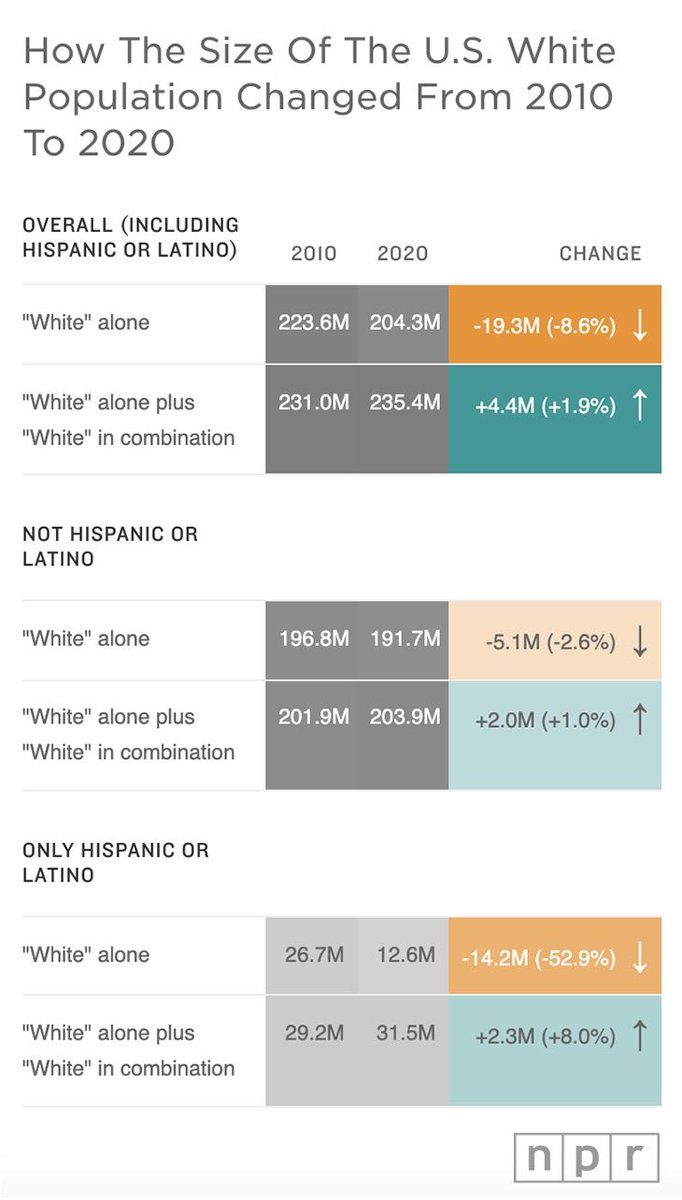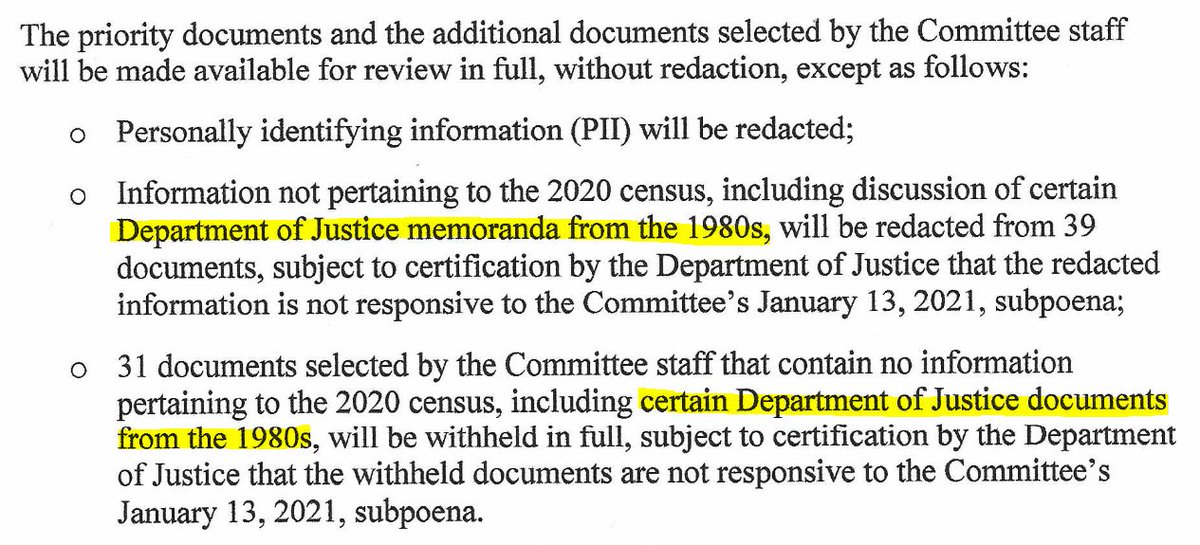
The recent media coverage about the white population “declining” or “shrinking” was misleading and maybe even dangerous. @nprviz’s Ruth Talbot and I dug into the new U.S. census data. The actual story is more complicated than what you may have read👇
npr.org/2021/08/22/102…
npr.org/2021/08/22/102…
2. The white population is still the largest racial group in the United States. How its size has changed since the 2010 census depends on how you define "white." 

3. For decades in the media (including my past reporting for @NPR), a population the Census Bureau calls "White alone non-Hispanic" has become synonymous with *the* white population.
This narrow definition ignores 2 key aspects about how the census produces race/ethnicity data.
This narrow definition ignores 2 key aspects about how the census produces race/ethnicity data.
4. The 2020 census data about race and ethnicity is based on responses to these two questions, which allow people to identify with more than one racial group and follow federal standards that say Latinos can be of any race. 



6. Maybe you read somewhere the number of white people supposedly “fell” for the “first” since 1790 according to 2020 census data?
Well, I hope you’ve also read warnings from the Census Bureau and @AnnJMorning about using caution when comparing 2020 race data with earlier data.


Well, I hope you’ve also read warnings from the Census Bureau and @AnnJMorning about using caution when comparing 2020 race data with earlier data.



7. Here’s why many researchers tracking far-right, white racial extremism say a narrative of a “declining” white population can be dangerous 



9. In the future, white people likely won't be the majority (and neither will any other racial group in the United States) 





10. The more you know about how 2020 census data was produced, the clearer picture you’ll have about the data that will be used to redraw voting maps, combat racial discrimination, guide federal funding and inform research and planning for the next 10 years.
https://twitter.com/hansilowang/status/1425774068066709508
• • •
Missing some Tweet in this thread? You can try to
force a refresh










